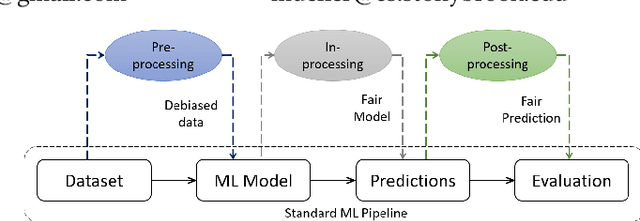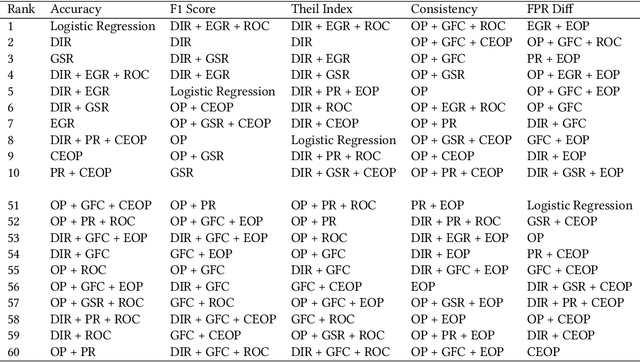Mihir Mishra
Cascaded Debiasing : Studying the Cumulative Effect of Multiple Fairness-Enhancing Interventions
Feb 08, 2022



Abstract:Understanding the cumulative effect of multiple fairness enhancing interventions at different stages of the machine learning (ML) pipeline is a critical and underexplored facet of the fairness literature. Such knowledge can be valuable to data scientists/ML practitioners in designing fair ML pipelines. This paper takes the first step in exploring this area by undertaking an extensive empirical study comprising 60 combinations of interventions, 9 fairness metrics, 2 utility metrics (Accuracy and F1 Score) across 4 benchmark datasets. We quantitatively analyze the experimental data to measure the impact of multiple interventions on fairness, utility and population groups. We found that applying multiple interventions results in better fairness and lower utility than individual interventions on aggregate. However, adding more interventions do no always result in better fairness or worse utility. The likelihood of achieving high performance (F1 Score) along with high fairness increases with larger number of interventions. On the downside, we found that fairness-enhancing interventions can negatively impact different population groups, especially the privileged group. This study highlights the need for new fairness metrics that account for the impact on different population groups apart from just the disparity between groups. Lastly, we offer a list of combinations of interventions that perform best for different fairness and utility metrics to aid the design of fair ML pipelines.
 Add to Chrome
Add to Chrome Add to Firefox
Add to Firefox Add to Edge
Add to Edge